** Crossover network overview **
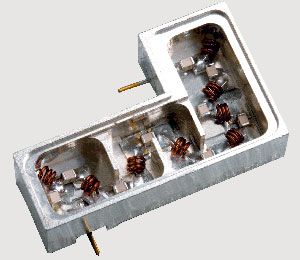
The crossover networks from ALK Engineering are the only ones available that are true upgrades. Only those from ALK Engineering were designed utilizing knowledge gained from over 35 years of experience with filters to microwave frequencies (beyond 300

Competitors: Once you have looked over the catalogue of network options you see here you will realize that there are no other networks available for Klipsch speakers that are similar. Other network vendors simply offer loads of variations on basic Klipsch network designs. One maker offers the klipsch networks just as Paul Klipsch made them. These are restorations; a legitimate service. Another, with very little electronics training at all, and no equipment but a soldering iron truly believes he is "improving" on them by offering builds with a long list of overpriced part options. Yet another, having a book-learned knowledge of basic electronics and no experience with filter design believes he can improve the state of the art by looking at loudspeaker drivers as electric "motors", a well understood concept addressed by the transformer and swamper shelving method employed in all ALK network designs. The fact of the matter is that loudspeaker crossover networks are "multiplexers" that fall directly into the realm of lumped component passive filter design techniques. For many years, ALK Engineering has offered a comprehensive computer software package called PCFILT for the design and evaluation of this very type of filter. It is described in detail elsewhere on this web site. Hundreds are in use by filter manufacturers all over the world. This makes ALK the only source of truly unique and advanced crossover networks for Klipsch loudspeakers. These other network makers are really not competitors. Evaluate them very carefully. They put on a good show!

What's wrong with the stock Klipsch networks anyhow?
Here's what!
About power handling

The photo at the left is an example of a "Universal" clone built under license by another person where the 10 Ohm swamping resistor is positioned down against the cable tie holding a capacitor to the board. The resistor itself looks undamaged by it's own heat but melted the tie into two pieces. This network was also clearly used at power levels above for which it was intended!
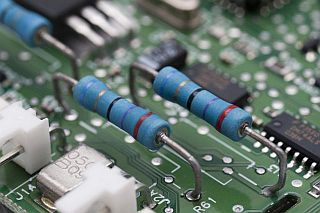

The networks I offer were designed for home entertainment use. They will handle power levels that will destroy your hearing in any home listening room.
It's not possible to specify how much power the network will handle because it depends on a list of factors including the efficiency of the woofer and midrange driver, transformer attenuation setting, and the duty cycle of the program material and duration.
In general ...
All our networks, except the
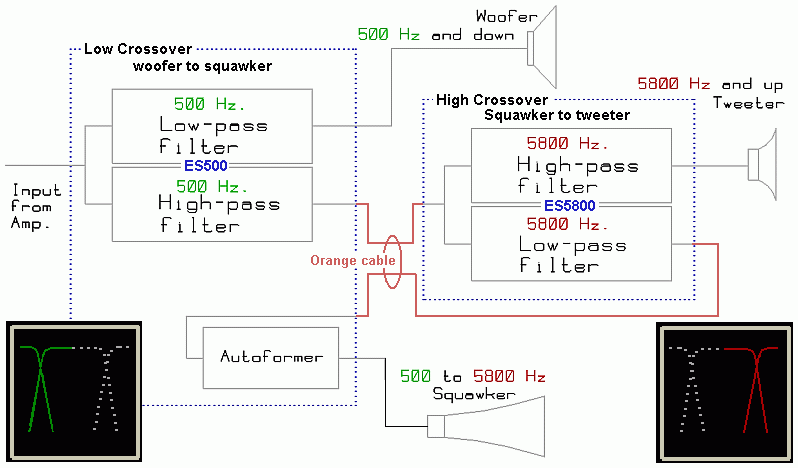
** Network selection guide **
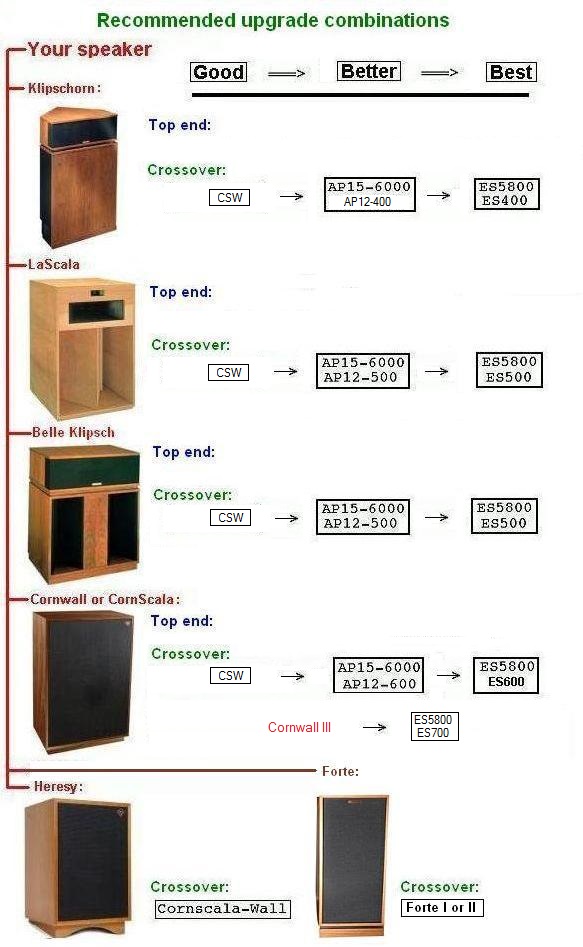
Look at the chart to the left to find
An extreme-slope crossover at 500 Hz has been designed for the The "slope" of a filter is a measure of how fast the frequency range outside the range a filter is designed to pass gets rejected. Most crossover networks will increase the rejection at a rate of 6, 12, 18 or 24 dB / octave. This refers to filter "order N" 1,2,3 and 4 respectively. One "octave" is double or half the crossover frequency. Two octaves is four times or one fourth the crossover frequency and so on. We refer to this type of filter as the "gentle slope" type (the fancy technical term used in the filter industry for this sort of response is "monotonic"). The plots to the left compare N=1 through N=4 to each other with a 500 Hz crossover as the midrange driver would "see" them. Our AP12-600 is an example of a 12 dB / octave N=2 filter.
The plots at the left compare the AP12-500, AP12-600 and the ES500 networks when used with the Fastrac Cornwall horn which has a low frequency cutoff of 380 Hz. It is the job of the network to kill everything below the crossover before it can reach the driver and cause problems. The AP12-500 offers about 7 dB protection at 380 Hz. The AP12-600 offers about 4.4 dB more than the AP12-500. The ES500 extreme-slope network offers about 17 dB improvement (24.5 dB).
The plots above compare various woofer to squawker (low frequency) networks. What about squawker to tweeter crossovers in a 3-way system?
The same things apply. Here is a direct comparison of the ES5800 extreme-slope and the AP15-6000 gentle-slope networks. The performance of the AP15-6000 is identical with the high section of the ALK Universal and the CornScala-wall networks.
Our Extreme-slope filters reject at a rate
beyond 120 dB / octave until they reach about 25 dB where the rejection levels
off. The faster slopes yield a noticeably better stereo image.
All ALK networks provide accurate shelving adjustments of both the mid-range (squawker) and tweeter levels to match any woofer efficiency or personal taste. Unlike networks by other builders, the attenuation is done by transformers (CSW tweeter uses L-pad) connected near the driver. Impedance seen by the filter is also stabilized by a swamping resistor so that the combination does not upset the network filters no matter the setting.
Are the old paper labels on the edge of your networks damaged or falling off ? High quality engraved replacements are available.
These are available directly from my source:
Stan Holt This seems to be becoming a very popular project in the DIY community. It is the result of combining the WORST features of the Cornwall and the La Scala speakers into one. The La Scala has the BAD K400 squawker horn from the Klipschorn and the Cornwall has the higher distortion direct radiator from the Cornwall. So, the result is a speaker with the harsh midrange of the Klipschorn and the higher distortion bass of the Cornwall. It will go down to 30 Hz though, and this is probably what it's all about!
The main talking point you hear from my competitors is "how does it sound" and different networks sound different. Of course they do! Tell me exactly how each one sounds. While your are at it, tell me what a potato tastes like if you can!
There is only one standard, reality. Does it sound like a piano when a piano recording is being played or does it just sound sweet, open and pleasing? If it's the latter, you are not an audiophile and you could save a lot of money by going to the demo room at Best Buy and getting a speaker that pleases you. You are the kind of person who will say that a particular crossover doesn't sound "musical". I say that it is not the job of a loudspeaker, or crossover, to sound musical. That is the job of the recording artist. A loudspeaker is intended to be a window through which you listen to recordings. It should add or subtract nothing!
To that end, a loudspeaker should not add anyting that the brain will perceive as an echo. This is why many people prefer 2-way systems. There is no time alignment issues that add multiple copies of the same sound that arrive at your ears at different times. This is the problem with the generally used gentle slope crossover networks. The filters are incapable of separating the signals to the correct drivers without also sending them simultaneously to the other drivers that are out of time alignment. This creates false ambience and a smearing as you hear everything twice, first from the driver closest to you then again from the one farther away.
Reality requires that a program be reproduced at the same level as it would be in a live performance. If it is reproduced at a low level it will not sound real. Add a little false ambience in the form of some echo and it sounds quite nice. It's like singing in the shower. It sounds good, but it's not real! This is what you get with gentle slope networks. Run the level up to a realistic level and it gets very obvious something isn't right. The stereo image also gets messed up! The brain confuses the timing errors with the real ambience of the recorded performance. Substitute a crossover that directs only the sounds intended for a particular driver to that driver and all this clears up! This is what extreme slope networks give you and why they will sound "dry" or "dull" at low levels. So will a live performance that should be played louder.
You will also hear major claims about high priced capacitors and how double-blind testing is worthless. The fact is, it is almost impossible to rig a scientifically correct A/B test of two crossover networks. In a three way system, you will need to simultaneously switch the cables to three drivers and the amplifier input between two networks. You MUST also see that the levels coming out of each of the three drivers of both networks are exactly equal. A listener will almost always prefer a source that is slightly louder than the other. The switching must be done in only seconds. To unhook one and hook another is not adequate. I will venture to say that this has seldom been done. The closest you will get is with two identical speakers to contain the networks under comparison. You can't get them in the same spot in the room at the same time. That doesn't work either! All the talk you hear is simply people hearing what they want to hear during poorly contrived comparisons. I call it the Al Klappenberger

 Enlarge
Enlarge

Klipsch Jubilee network
The computer plots to the right compare the response of the normally used 12, 18 and 24 dB / octave filters (N=2, 3 and 4) to each other. The plots are all shifted to illustrate how the crossover can be lowered with a sharper slope (higher order filter) and still maintain 20 dB of protection for the squawker driver from sounds at 200 Hz. Notice how the ES400 extreme-slope filter with a 400 Hz crossover is far ahead of the others providing over 25 dB protection all the way up to and beyond 310 Hz where the Martinelli Trachorn or the Fastrac K Edgar type tractrix horns cut off. Even the 24 dB / octave N=4 filter offers only about 6 dB of protection at 310 Hz! You can rest assured that you will not damage your mid-range "squawker" driver with an extreme-slope network.

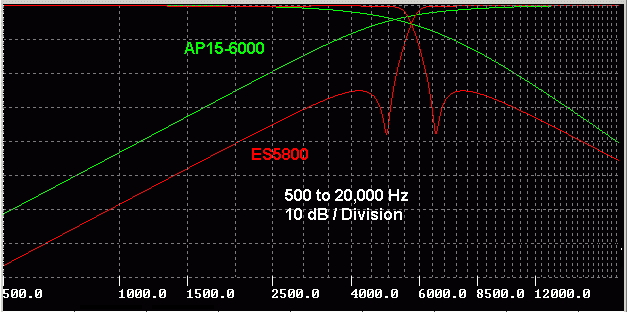


Singing in the shower
